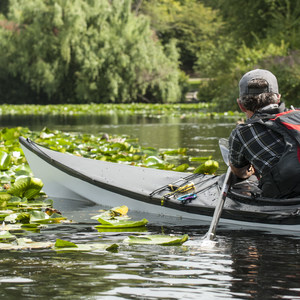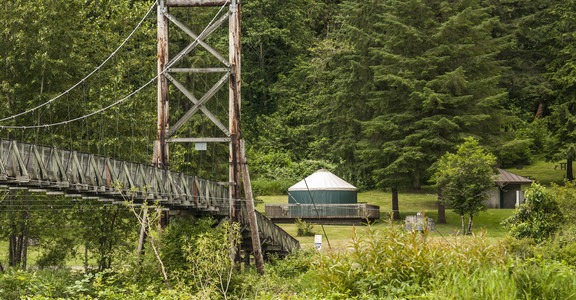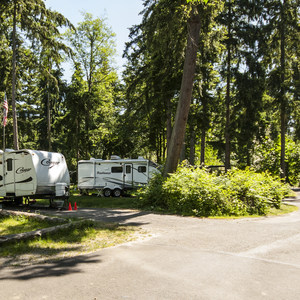The construction of the Washington Ship Canal drastically changed the watershed surrounding Lake Washington when the water level was lowered almost nine feet in 1916. Marshes dried, islands became peninsulas, rivers disappeared entirely, and Lake Washington was connected to Puget Sound.
Initially proposed by Thomas Mercer in 1854 when he saw the need to connect the two bodies of water, the details of his plan would be hotly debated for decades to come. Harvey Pike was the first to break ground in 1860 when he dug a shallow ditch where the present day Montlake Cut sits to allow logs to flow from Portage Bay into Lake Washington. Pike's shallow ditch was later widened and deepened by Judge Thomas Burke to increase log flow volume.
Despite an endorsement by the U.S. Army Corps of Engineers for a canal through Lake Union, a plan for a southern canal through Beacon Hill gained traction due to efforts by former Territorial Governor Eugene Semple. Early terraforming progressed enough by 1895 to create about 1,400 acres of land in present-day SoDo. The south canal plan was defeated when railroad magnate James J. Hill was able to undermine Semple's finances and political sway. In 1906, U.S. Army Corps of Engineers Commander Hiram M. Chittenden took control of the project and convinced the government to provide just over $2 million to build the locks necessary to make the canal feasible.
Construction on the locks finally began in 1911, the water in Lake Washington was lowered in 1916, and the canal was open to boat traffic on May 8, 1917. Today the Hiram M. Chittenden Locks are the busiest locks in the United States, serving vessels ranging from kayaks and fishing boats to cargo ships. Custom built sections of the new 520 floating bridge have been designed to fit through the large lock.
Kayaking through the canal is a 13.5-mile round trip from the Washington Park Arboretum to Shilshole Bay and back. Seven bridges span the canal, and one tunnel goes under it. Heading westward, the first landmark is the Monlake Cut, which can develop a large wave at sharp angles when larger vessels pass through the narrow section of canal that makes it very difficult to navigate as a smaller vessel. The Montlake Cut opens into the small Portage Bay, which in turn connects to the larger Lake Union. Paddling around Portage Bay and Lake Union are adventures all their own. Lake Union leads into the Fremont Cut, and this connects to to Salmon Bay, home to countless fishing boats, tugboats, icebreakers, and mariner cultures of all sorts. Continuing westward beyond the Ballard Bridge, the Hiram M. Chittenden Locks appear in the distance. Using the locks as a kayaker is exceptionally easy; approach the small lock to the south, wait for the light to turn green, enter the locks, and follow any directions given by the lock attendants. Directions will usually consist of "move over here" and "hold on." As the water slowly lowers, enjoy the current that rushes out into Shilshole Bay. Note that you will be paddling against this current when using the locks to work your way eastbound on the return.











Comments
Sign In and share them.